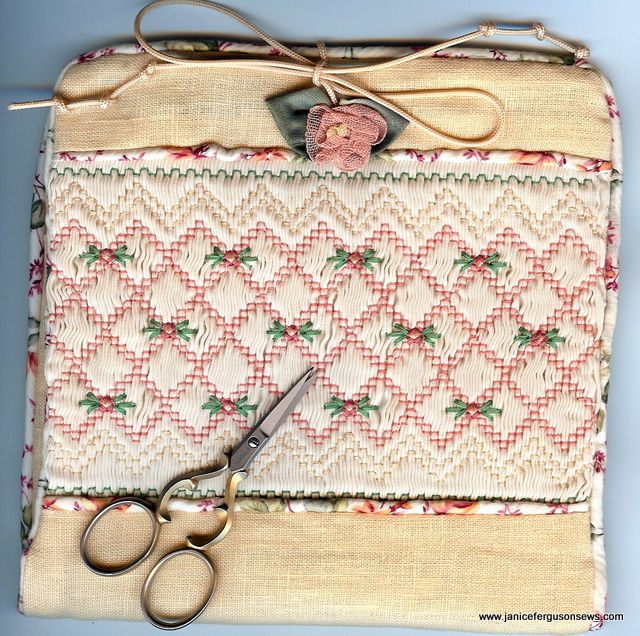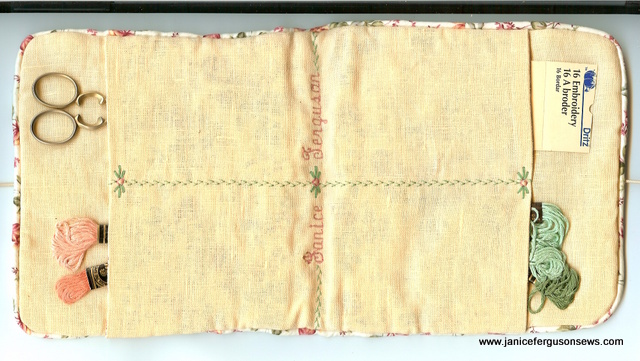This little sewing caddy is very useful for keeping your sewing or smocking essentials handy and organized while traveling, waiting in the doctor’s office or wherever.
It is made of butter yellow linen, lined with a Rose and Hubble floral lawn and smocked on my Brother ULT embroidery machine. Without very close scrutiny, I suspect it could pass for traditional English smocking, done with needle in hand.
 I love everything about English smocking, from the intricacy of the stitching to the comfort of the soothing process. So when smocking by machine came on the sewing scene, I was skeptical at best, dismissive at worst.  Now, to digitizers of smocking by embroidery machine, I have to say, you’ve come a long way, Baby!
For those of you who are curious about the development and progression of the needlearts, I will share with you the unabridged and unauthorized History of Smocking by Machine as Seen through the Eyes of Janice Ferguson.  I have a minor in history and combining my passion for sewing with that interest is irresistible.
The first time I saw smocking by machine was in the early 80’s, when Martha Pullen held her first sewing schools at the little shop on Madison Street in Huntsville, Alabama. For the first seven schools, I was one of the teachers, and I can tell you that even for the 1983 version of Janice Ferguson, the schedule was grueling.
In order to be enrolled, the students were required to be business owners or one of their staff members. So while it was fun and exhilarating to be among women of like mind and a commensurate zeal for needlearts, the curriculum and the mood had a serious business bent.
Martha wanted to be certain every student got her money’s worth and came away with a collection of classes that could be taught at the shop back home. Classes began at 8 a.m. and ended about 10 p.m. Lunch hours were spent balancing a plate while watching demonstrations. It was a deee-vine buffet of sewing skills and we all overate.
Theta Happ was another one of the teachers and she was fabulous. She had more tips and techniques up her sleeve than any teacher I’ve ever known. One of her lunch hour demos was English smocking on the sewing machine. Remember, there were no home embroidery machines at that time.
Theta had developed a really neat technique using what she called “double aught” double pointed knitting needles. With the feed dogs down, she slid a knitting needle between two pleats and worked a 3 stitch bar tack over the two pleats. While that needle was still in place, she slid another between the next two pleats and worked her way up or down for a wave stitch or simply worked beside the previous bar tack for a faux cable.
It was very interesting. I thought the technique could be useful for design components like fence posts. But I could hand smock more quickly than I could move those needles.
When the embroidery machine hit the home sewing market, Deb Yedziniak stunned the sewing world with her techniques and designs. Others followed, including Sue Lord whose picture smocking collection is fabulous. This collection is accompanied by some unique tips and tools that guarantee success.
If you have read this far, I congratulate you on your interest and you will be happy to know that the history lecture is over.
The design used on this sewing caddy was a free download, no longer available. But if you have to do a lot of smocking in a short time, for church bazaar work or for several grandchildren, smocking by machine is something you might want to check out.




5 responses to “Machine Smocked Sewing Caddy”